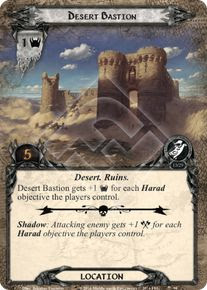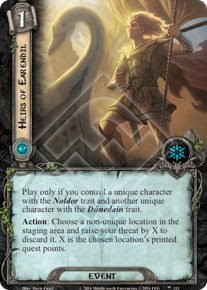I wanted to add a little bit of verisimilitude to our Rogue Trader tabletop role-playing game campaign by figuring out what holidays people celebrate in the Acheron sector. We actually don't seem to know a whole lot about the Imperial year. There's a pretty good summary of what we do know at Bell of Lost Souls, and I've taken it as my point of departure. All dates are, of course, in the Imperial Dating System.
So what we learn from BoLS is that the main holidays of the Imperial calendar are Emperor's Day, which marks the new year, the Feast of the Emperor's Ascension, whose date is not given, and Candlemas at the end of the year. In general, holidays attached to religious figures don't necessarily have anything to do with their actual lives, if they even lived at all; for example, the date of Christmas was fairly obviously selected to coincide with the winter solstice, not least because it was already a popular Roman holiday. The fact that the first "Christmas" was celebrated centuries after Jesus's alleged birth quite conclusively demonstrates that it has no relation to any actual events. Using the same logic, I've decided to assign the Feast of the Emperor's Ascension to Midsummer, or year fraction 500.
This leaves the spring and autumn equinoxes, and since the Imperial calendar is based on ours, I thought it would be appropriate for them to also be important holidays that somehow carry on the spirit of ours. For autumn, it feels very Imperial to celebrate martyrs, so I've named the autumn equinox holiday the Martyrion. Spring is more difficult, since something celebrating new life and fertility verges on Slaanesh (although I still maintain that the Imperium is probably much more sex-positive than our 21st century society!), but I came up with a holiday called Vigilia, or Vigil in English: a coming-of-age feast day themed around the changing of the guard. A new generation takes up the watch and so on.
Apart from these major holidays, I've come up with a bunch of minor ones, with some assistance from my players, for which I'm grateful. As a final note, all the official year fraction dates are just that; in practice, I'd expect worlds would have to decide whether to celebrate a solstice holiday on the actual solstice, or on the exact official Imperial date. With ships each having their own time, some fairly bizarre feast-day coincidences will undoubtedly happen (if they get too bizarre, get in touch with the Ordo Chronos. Be vigilant!)
**
Major imperial holidays
Emperor's Day
Official date: year fraction 1
The most sacred holiday in the Imperial calendar celebrates, well, the Emperor. Not commemorating this holiday is surely a heresy. Unfortunately, we know very little about how it's celebrated! As it opens the new year, I'd like to think it's a time to celebrate new beginnings and undertakings.
Vigilia
Official date: year fraction 250
The Festival of the Watch celebrates coming of age, and the changing of the guard as new generations take up the cause of the Imperium of Man. Vigilia is celebrated in many different ways across the Imperium, from solemn religious ceremonies to blood sports. Space Marine chapters often choose recruits on Vigilia, and it is a traditional time for promotions and retirements.
Ascension
Official date: year fraction 500
Lexicanum tells us that the Feast of the Emperor's Ascension is a week-long festival that's considered an especially auspicious time for marriages and other undertakings, and is generally the most important festivity of the year.
Martyrion
Official date: year fraction 750
As the autumn darkens, Imperial citizens come together to remember the dead at Martyrion. The form of the festivities varies from planet to planet, from somber processions to raucous parties, but all are focused on the honored dead, especially those who gave their lives in the service of the Emperor.
Candlemas
Official date: year fraction 997
A solemn holiday that marks the end of the year, and usually the darkest time of winter. Candlemas is a celebration of the light of the Emperor shining throughout the galaxy. On some worlds, Candlemas is celebrated as Sanguinala, in memory of the sacrifice of the Primarch Sanguinius.
**
Minor Imperial holidays
Day of Light
Official date: year fraction 200
An important ecclesiastical holiday, the Day of Light commemorates the overthrow of the tyrant Vandire by Sebastian Thor, and the founding of the Adepta Sororitas.
Knights' Day
Official date: year fraction 225
The main festival of the year on knight worlds, on other planets of the Imperium Knights' Day is celebrated as a martial holiday and the start of Vigilia festivities.
Feast-day of the Imperial Guard
Official date: year fraction 300
Soon after the great feast of Vigilia comes the feast-day of the Imperial Guard. On worlds with extensive Vigilia celebrations, this can be a solemn holiday of remembrance and return to duty; regiments often ship out after the feast-day. Years of service in the Guard are traditionally calculated by this date.
Day of Mercy
Official date: year fraction 400
A holy day of many saints across the Imperium, the Day of Mercy is the feast-day of the Imperial courts and Judges, and an important day for the Ecclesiarchy. If prisoners are to be pardoned or other indulgences announced, they are traditionally done on this day. The Day of Mercy is also considered an auspicious day to appeal to authorities or sponsors.
The Olympiad
Official date: year fraction 600
The Olympiad celebrates the Treaty of Olympus between the Imperium and the Machine Cult. For reasons that have been long since forgotten, the Olympiad is a time of athletic contests between teams and individuals.
Orphans' Day
Official date: year fraction 650
The feast-day of the Schola Progenum, Orphans' Day is a festival dedicated to children.
Tank Day
Official date: year fraction 700
The mailed fist of the Imperial Guard is celebrated on a day of motor-races and noisy festivities. On some worlds famous for their armored regiments, Tank Day is a highlight of the year and can involve an entire week of feasting, and even contests of skill involving actual tanks.
Masquerade
Official date: year fraction 775
A festival of masks and and revelry, rumored to be the feast-day of the Officio Assassinorum.
Artillery Day
Official date: year fraction 885
A feast-day that celebrates the Imperial Guard's massive indirect fire support, and also the factories and Forge Worlds that produce it. This is a festival of both firepower and labor.
Fleet Day
Official date: year fraction 900
Reckoning
Official date: year fraction 925
The first of the end-of-the year festivals, Reckoning heralds the coming of the Emperor's day and the last labors of the year. It is the feast-day of the Adeptus Arbites and of Imperial justice in general.
Feast-day of the Administratum
Official date: year fraction 950
In the Segmentum Obscurus, Candlemas season traditionally starts in 950 with the Feast-day of the Administratum, signifying another year in the record-books. There is great pressure on the scribes and adepts of the Administratum to conclude their work by the feast-day, though this rarely succeeds. By tradition, Administratum business stops on the feast-day and recommences after Emperor's Day. Filling and submitting forms on the feast-day is considered to bring good luck to the endeavour.
**
Acheron sector holidays
Martyrion of St. Valeria
Official date: year fraction 400
Consort of Saint Anastasia and scourge of the xenos, the Martyrion of St. Valeria the Light-bringer closes out the spring festivities in the Acheron sector, and is celebrated as the feast-day of Navigators.
Martyrion of St. Isabella
Official date: year fraction 700
Revered Saint Isabella the Just purged the Charon fringe of heretics and founded the Acheron sector, where her saint's day opens the Martyrion festivities.
Martyrion of St. Anastasia
Official date: year fraction 800
The last day of Martyrion in Acheron is in memory of revered Saint Anastasia, who opened the way to the rimward reaches of the sector and is especially commemorated in Ultra Pars.
**
Other local holidays
Confederation Day
Official date: year fraction 150
This day commemorates the founding of the Confederation, and is celebrated there as a joyous festival.
**
Anyway there's a bit of fluff that was fun to write. Next up, I think I'm going to talk a little more about the Confederation.
No. 5886: POVfield
11 hours ago



















